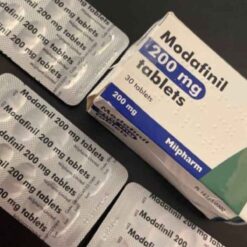buy Glimepiride online
€980.00
Buy Glimepiride online.
If you or a loved one has been diagnosed with type 2 diabetes, your doctor may prescribe a medication called Glimepiride (often referred to as Glimepiride hydrochloride). This oral drug is widely used to help manage blood sugar levels and prevent complications of diabetes—but like any medication, it comes with specific directions and potential side effects.
Let’s take a closer look at what Glimepiride is, how it works, and what you should know before taking it.
Buy Glimepiride online: Uses, Dosage, and Side Effects
Buy Glimepiride online. If you or a loved one has been diagnosed with type 2 diabetes, your doctor may prescribe a medication called Glimepiride (often referred to as Glimepiride hydrochloride). This oral drug is widely used to help manage blood sugar levels and prevent complications of diabetes—but like any medication, it comes with specific directions and potential side effects.
Let’s take a closer look at what Glimepiride is, how it works, and what you should know before taking it.
What Is Glimepiride?
buy Glimepiride online. Glimepiride is an oral medication used to lower blood sugar in people with type 2 diabetes mellitus. It belongs to a class of drugs called sulfonylureas, which work by stimulating the pancreas to release more insulin.
Glimepiride is typically prescribed when diet, exercise, and lifestyle changes alone aren’t enough to control blood sugar levels. It may be used alone or in combination with other medications, such as metformin or insulin.
How Does It Work?
Glimepiride helps control blood sugar in two key ways:
-
Stimulates insulin release from the pancreas.
-
Helps the body use insulin more efficiently, reducing overall blood sugar levels.
It is most effective when taken alongside a healthy diet and regular physical activity.
Common Brand Names
-
Amaryl (a widely recognized brand)
-
Generic versions simply labeled Glimepiride
Dosage and How to Take It
buy Glimepiride online. The dosage of Glimepiride can vary depending on your age, blood sugar levels, and how well you respond to the treatment.
Typical Dosage Guidelines:
-
Starting dose: Usually 1 mg to 2 mg once daily with breakfast or the first main meal.
-
Maintenance dose: 1 mg to 4 mg per day.
-
Maximum dose: Up to 8 mg per day.
💊 Always take Glimepiride with food to reduce the risk of low blood sugar (hypoglycemia).
⏱ Do not skip meals while on this medication—it can cause your blood sugar to drop too low.
Common Side Effects
While many people take Glimepiride without problems, it can cause side effects. The most common include:
-
Low blood sugar (hypoglycemia)
Symptoms: Shakiness, sweating, hunger, irritability, dizziness -
Nausea or upset stomach
-
Headache
-
Weight gain
-
Allergic skin reactions (rash, itching)
Serious Risks and Precautions
Though rare, more serious side effects can occur. These include:
-
Severe hypoglycemia, especially in elderly patients or those with kidney/liver problems
-
Liver problems, including jaundice
-
Blood disorders, such as anemia or low platelets
🛑 Seek medical attention immediately if you notice signs of allergic reaction, yellowing of the skin or eyes, easy bruising, or confusion.
Who Should Be Cautious?
Talk to your doctor before using Glimepiride if you:
-
Have kidney or liver disease
-
Are pregnant or breastfeeding
-
Have a history of allergic reactions to sulfa drugs
-
Drink alcohol heavily (which increases the risk of low blood sugar)
Drug Interactions to Watch Out For
Certain medications can affect how Glimepiride works or increase the risk of side effects, including:
-
Beta-blockers (used for heart problems)
-
Insulin or other diabetes medications
-
Diuretics (“water pills”)
-
NSAIDs like ibuprofen
-
Blood thinners (e.g., warfarin)
Always inform your healthcare provider of all the medications and supplements you are taking.
Tips for Safe Use
Check your blood sugar regularly.
Eat balanced meals and don’t skip food.
Carry a fast-acting sugar source (like glucose tablets or candy).
Wear a medical ID bracelet or carry a diabetes card
Follow up with your doctor regularly.
Conclusion
Glimepiride is a helpful and effective medication for many people with type 2 diabetes. When taken correctly and alongside healthy habits, it can significantly reduce the risk of diabetes-related complications. However, like all medications, it must be used carefully and under medical supervision.
Always talk to your healthcare provider before starting, stopping, or adjusting your dose of Glimepiride.
Be the first to review “buy Glimepiride online” Cancel reply
Related products
Pills
Pills
Pills
Pills












Reviews
There are no reviews yet.